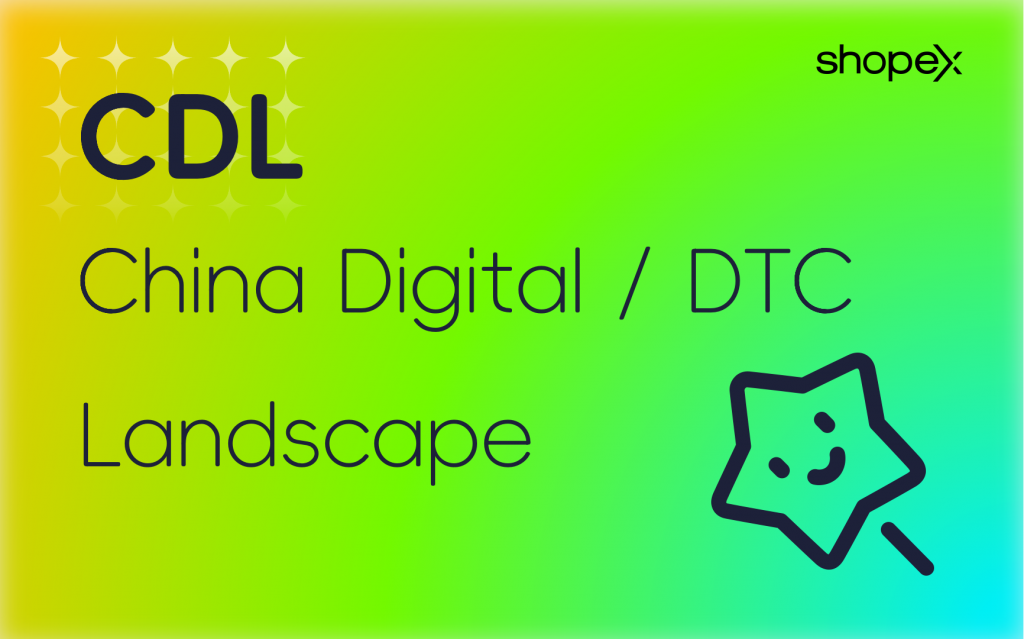
The “CDL Landscape” summarizes and analyzes the nine modules of “CONSUMER, GOODS, CHANNEL, RIGHTS, OWNERSHIP, INTERESTS, FINANCE, TAXATION, LAW” from three aspects: business operation, business collaboration, and business compliance.
It also analyzes the pain points and digital transformation needs of many internationally renowned brands when transitioning from B2B business to DTC business.
(1) Business Operation: The core essence of the DTC model lies in analyzing the comprehensive needs of consumers (people), products (goods), and the shopping experience (channel), establishing both online and offline touchpoints that directly reach consumers. By accurately and promptly meeting consumers’ personalized needs, a virtuous cycle of diffusive positive feedback can be achieved.
(2) Business Collaboration: DTC represents a transformation of business models and business concepts. It requires the collaborative expansion of all relevant internal departments of the brand and the external ecosystem of the brand, such as operation service providers and distributors, to be smoothly promoted. During the process of business collaboration, the distribution of interests and the redesign of the interest system should be fully considered.
(3) Business Compliance: For brand owners, the innovation and practice of business models need to be based on the foundation of legality and compliance. Under the increasingly diverse retail scenario models, brands should pay attention to the financial, legal, and tax compliance of new businesses.
ShopeX is the first service provider in the industry that fully integrates the nine modules involved in omnichannel retail business, namely “CONSUMER, GOODS, CHANNEL, RIGHTS, OWNERSHIP, INTERESTS, FINANCE, TAXATION, LAW”, to interpret the Chinese retail digital blueprint. This also reflects the rich experience and comprehensive understanding accumulated by ShopEx during its service to global leading brands.
ShopeX believes that all the above theories will ultimately focus on the capabilities of enterprises in two aspects, namely “omnichannel reach capabilities” and “digital capabilities”.
(1) Omnichannel Reach Capabilities: It means getting infinitely close to consumers through innovative business models. For example, the reach capabilities of online e-commerce platforms, the reach capabilities of brand official websites; the integrated online-offline reach capabilities of enterprises, the collaborative reach capabilities between brands and distributors; and the ability to establish regional instant reach.
(2) Digital Capabilities: It refers to enhancing the operation capabilities facing consumers through digital construction. For example, enterprises should have the ability to manage inventory across all channels, the ability to quickly fulfill supply chain orders, and the ability to monitor logistics for both online and offline scenarios as well as multiple stores and warehouses.
In addition, it also includes the ability to reallocate the interests of business roles and the ability to uniformly operate omnichannel members.
When conducting omnichannel retail business in China, it is necessary to comprehensively consider the nine modules of “CONSUMER, GOODS, CHANNEL, RIGHTS, OWNERSHIP, INTERESTS, FINANCE, TAXATION, LAW” to make business innovation and collaboration more efficient.

商派官方订阅号

领取相关报告
近期文章
- Kimi、Manus 成程序员新宠,2026 未来产业报告:这些赛道将诞生下一个巨头
- 从霸王茶姬到周大福,2025 新中式审美如何重构内容消费与商业版图?
- 巨头偷偷布局!2026年中国十大新商业趋势曝光···|商派
- 从依赖到自主:NVIDIA、Oracle 们押注的主权 AI,正在重塑全球科技格局
- 11 月天猫服饰趋势出炉!告别 “用力过猛” 的潮,松弛感才是秋冬主旋律~
- 月入20万!2026年这些“新中产”正在改变中国高端消费市场|精锐人群生活方式洞察
- 2026年能源行业B2B系统TOP4权威推荐:B2B订货、DMS经销商系统、S2B2B平台、客户门户
- 县域市场、绿色消费,2025 中国商业领域十大风向标:政策、消费与全球化的三重变革


 沪公网安备 31010402000102号
沪公网安备 31010402000102号
 电子营业执照
电子营业执照